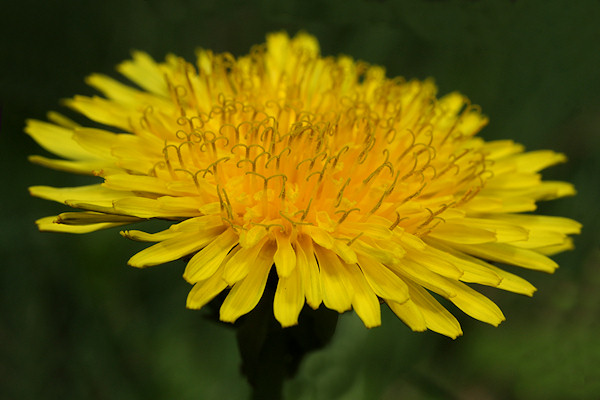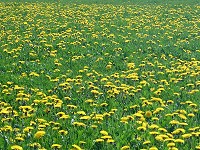 My very first experience with plant weirdness occurred when I was 7 1/2 years old. I was with my Mom in the backyard. She was working the flower bed. I noticed a dandelion, really noticed it or did it notice me? The yellow flower was SO YELLOW. The more I looked the bigger and yellower it got. Seemed like we were almost talking. Wow.
My very first experience with plant weirdness occurred when I was 7 1/2 years old. I was with my Mom in the backyard. She was working the flower bed. I noticed a dandelion, really noticed it or did it notice me? The yellow flower was SO YELLOW. The more I looked the bigger and yellower it got. Seemed like we were almost talking. Wow.I ran for the shovel, dug up the roots and flopped this great muddy lump right side up into a bucket . That flower was coming with me, in my room, forever. As I headed for the basement door, glowing with anticipation, trailing dirt and grass for sure, my mother gave the universal stop sign. Imagine my surprise. I learned right then that dandelions were considered outlaws, and even a talking dandelion was not going in the house.
I never got over that glorious dandelion, even if she couldn't live with me. They seemed to blossom for me alone. First flower popping out of the snow, spawning multiple generations within one season. Now that is relentless, foolhardy overproduction. Not only that, after decades of poison sprays, beheadings, and uprootings they thrive, fairly flaunting their immortality to wannabe perfect lawn owners. Walk on them, drive over them, even mow them and they pop up eventually. When I spent summers mowing and tending flower gardens as Handy Ma'am, I cursed them bending under my mower blade. Later that same day, up they would pop on 3 inch uncut stalks. Now that was a neat trick.

With astronomical nutritional content in their leaves, roots and flowers. dandelions weigh in as a first rate survival ration. That might be why we can't kill them even with the most sophisticated weaponry developed by modern chemical manufacturing. Same goes for the other muscle bound botanical wonders like burdocks, collards, chicory, thistles, dock, coltsfoot, and countless others
98% of the time, if you find a rugged, fast growing, tough-to-kill, prolific plant specimen it will be packed with mega- nutritional and/or medicinal properties. Often these non-indigenous plants emigrated from Europe, Asia or South America. Hitch hikers looking for new territory to exploit.
My belief that big and burly equals helpful got a thorough testing in rural Canada. Invasive garden pests-chickweed, mallow, dandelion, chicory, burdock, pigweed were all delicious if you knew how to fix them. Large nutrition, too. So far the only examples of ferocious foliage that haven't lived up to this promise are Montana's dreaded knapweed and Californias curse, genesta. One day they may reveal redeeming properties as plant allies.
Alley picking my first season in town yielded lambs quarters, burdock stems, and chickweed with an occasional viola thrown in for color. I still missed the hardy delicacy we wild harvested every year in New Brunswick, in the hardwood forests near my home.
On Mother's Day, months before anything else, the quest for fiddlehead ferns sent families running for the woods. Folks guarded their fiddlehead spots like prize fishing holes. The locations were passed down within families to the succeeding generations, never to be revealed. If you tasted those curled discs with vinegar and butter, you would know why the secrecy. They were better than anything imaginable.
Future posts will explore ways of expanding the growing season, some ideas for projects with kids and a look at my low tech 'growinghut' for winter produce. It is more modest than a greenhouse and easily assembled and heated. Hopefully you will share your thoughts and links, help correct my errors and expand my horizons so that we can all be alley grazers together, getting happier and healthier in the process! And spending less for more, which is why I started foraging in the first place.

No comments:
Post a Comment